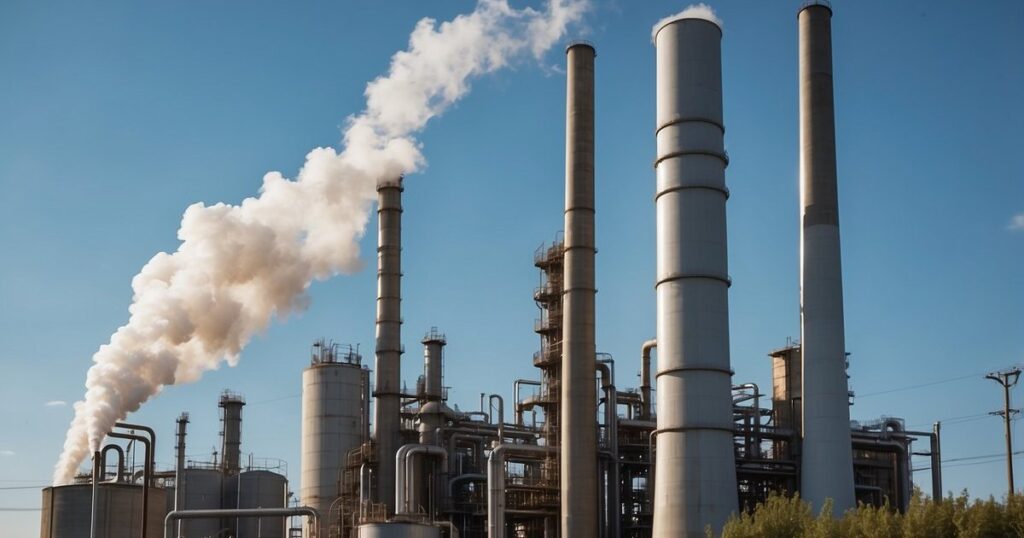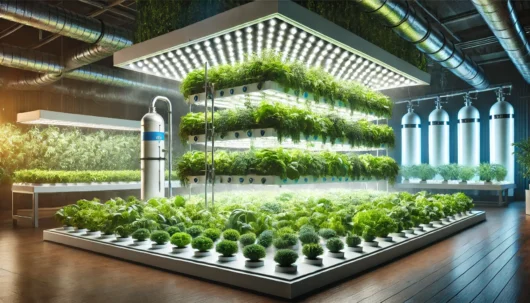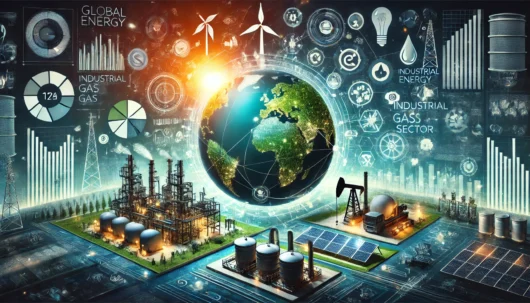Industrial gases are integral to numerous manufacturing processes, with a central role played by substances like carbon dioxide (CO2) and methane (CH4). However, these gases also contribute significantly to greenhouse gas emissions, enhancing the greenhouse effect and exacerbating global warming. Understanding the environmental impact of industrial gases is vital in curbing climate change. While the Earth’s atmosphere naturally contains these gases, their elevated concentrations due to industrial activities disrupt the radiative balance, trapping more heat.
You have the power to influence positive change through supporting industries that actively engage in mitigation activities. Such measures include improving energy efficiency, capturing and storing emissions before they reach the atmosphere, and transitioning to renewable energy sources. The key to combating the negative effects of industrial gases lies in innovation within the industrial sector and the widespread adoption of sustainable practices.
Key Takeaways
- Industrial gases contribute to greenhouse gas emissions, affecting the global climate.
- Understanding the environmental impact is critical to developing effective mitigation strategies.
- Individual and collective action can drive industry changes towards sustainability.
Industrial Gases and Greenhouse Gas Emissions

Your understanding of the environmental impact of industrial gases is crucial in grasping the broader effects of human activities on climate change. By exploring the sources, types, and effects of these gases, as well as measures for mitigation, you’ll gain a clear picture of the industrial role in greenhouse gas emissions.
Sources and Types of Industrial Gases
Industrial gases, such as carbon dioxide, methane, nitrous oxide, hydrofluorocarbons, perfluorocarbons, and sulphur hexafluoride, originate from various industrial processes. Among these, carbon dioxide is the dominant emission from the combustion of fossil fuels in energy production, while methane emissions are notable in sectors like agriculture. Manufacturing industries also contribute other potent gases with high global warming potentials.
Impact of Energy Production and Consumption
The production and consumption of energy largely drive your industrial activities. The combustion of fossil fuels, such as coal, oil, and natural gas, for electricity and heat accounts for a significant share of carbon emissions. This energy use is not only about maintaining operations but also about fuelling the transportation of goods.
Sectors Contributing to Emissions
Key industrial sectors such as cement, steel manufacturing, and agriculture are responsible for substantial emissions. Subsectors include the following:
- Cement: CO₂ from clinker production processes.
- Steel: Intense energy use and carbon dioxide emissions from blast furnaces.
- Agriculture: Methane from livestock and nitrous oxide from soil management.
Regulations and Environmental Protection
The Environmental Protection Agency (EPA) and international bodies enforce regulations to manage and reduce greenhouse gas emissions. Policies like carbon pricing and emissions trading schemes are employed, while carbon capture and waste management strategies target emission reductions.
Trends, Science, and Technology
Recent trends post the COVID-19 pandemic show changes in emissions profiles as economies rebuild and adjust. Scientists and engineers are developing innovative technologies for renewable energy, emission reduction, and more effective carbon capture methods, which are changing the face of industrial efficiency and sustainability.
Global Perspective and Policy
The global response to emissions encompasses a collaborative effort between nations, including the United States, China, and India. International agreements, like the Paris Climate Accord, aim to align global climate policy with actions to limit temperature rises and reduce carbon footprints.
Frequently Asked Questions
Industrial gases play a significant role in shaping your environment. Understanding their impact on climate change, air quality, biodiversity, human health, ocean acidification, and long-term environmental consequences provides valuable insights into the necessity for effective mitigation strategies.
What are the ramifications of industrial gas emissions on climate change?
Emissions of industrial gases, such as carbon dioxide and methane, intensify the greenhouse effect. This results in global warming, which can cause significant climate changes that affect ecosystems and weather patterns across the globe.
How do industrial gas releases contribute to air quality degradation?
Air quality degrades when industrial activities emit pollutants like nitrogen oxides and sulphur dioxide. These gases can form ground-level ozone and particulate matter, leading to smog and harmful air conditions.
In what ways do emissions from industrial activities affect biodiversity?
Industrial emissions can destroy habitats and alter ecosystems’ natural balance. This affects biodiversity by threatening the survival of various species and disrupting ecological networks.
What health risks do greenhouse gases pose to human populations?
Greenhouse gases contribute to climate change, which may increase the prevalence of heat-related illnesses and diseases transmitted by water and insects. Air pollutants emitted alongside greenhouse gases can also cause respiratory and cardiovascular diseases.
How does the production of industrial gases influence the acidification of oceans?
Industrial carbon dioxide emissions contribute to higher levels of CO₂ in the ocean, leading to ocean acidification. This process can harm marine life, particularly organisms with calcium carbonate shells or skeletons.
What are the long-term environmental consequences of sustained industrial gas emissions?
Sustained emissions contribute to persistent environmental issues like climate change, loss of biodiversity, and changes in land and water resource availability. These changes can have far-reaching effects on global ecosystems and human societies.


